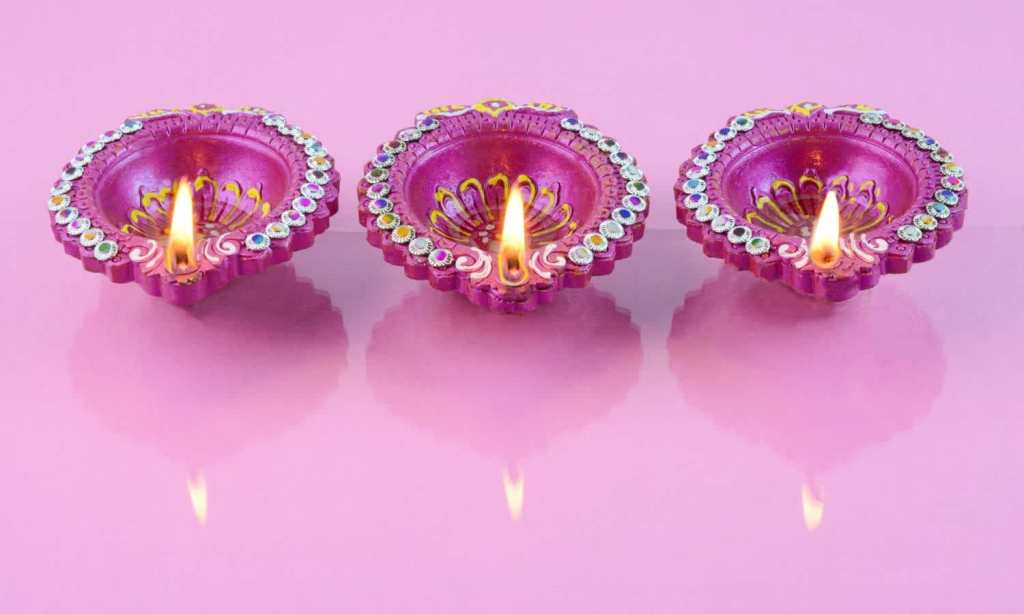And Just Like That’s exploration of different cultures and ways of living continues in episode six, with Carrie inviting herself along to her realtor Seema’s family celebration of Hindu festival Diwali.
“Is that allowed?” Carrie asks when Seema suggests she, too, wear a sari to the event. “You’re wearing it to a traditional celebration at my family home. That’s not cultural appropriation, that’s cultural appreciation.”
But so, what is Diwali all about, anyway, and how is it celebrated? Well, as someone with an Indian dad — raised Hindu, but not practising — I thought I’d share a little about it so you can culturally appreciate it, too.

Firstly, What Exactly Is Diwali?
To sum it up, Diwali is a festival of lights or, like Seema explains in the episode, it’s a “celebration of light triumphing over the dark”. And while, like with other festivals in India, every region has distinctive traditions for commemorating the festival, all take Diwali to this triumph of light over darkness and wisdom over ignorance.
Diwali is linked to the ancient legend of Lord Rama, who was deprived of his kingdom and sent into exile for 14 years, eventually returning and defeating the evil spirit, Ravana.
The festival also honours Lakshmi, the goddess of wealth, abundance and well-being, and Ganesh, the god representing good fortune and wisdom for the coming year. The lights and lamps lit are said to help Lakshmi find her way into peoples’ homes, bringing prosperity in the year to come.
When Is Diwali Celebrated?
It’s the most important date in the Hindu calendar (though also celebrated by Sikhs and Jains), changing its date every day, but always celebrated on a moonless night in October or November, a time when the Indian summer and monsoon rains give way to cooler evenings. As with many other festivals and celebrations — weddings, included — which take place over many days, it runs for five days.
The main celebration of Diwali takes place on the third day, with sparklers and fireworks, while the day before is known as ‘chotti Diwali’ or ‘little Diwali’. On the fifth and final day of the Diwali festival, sisters pray for the well-being of their brothers and, in return, receive sweetmeats (desserts) and gifts.
How Is Diwali Celebrated?
The time around Diwali is one for dinner parties, outdoor food festivals and craft fairs, as well as redecorating the home, buying new clothes and jewellery and exchanging gifts like sweetmeats, dried fruits and nuts.

As for the food around Diwali time, again, each region has its own favourites, but snacks include samosas, bhajis, aloo tikki and ‘farssan’ (a crunchy snack), while the main meal features meaty curries or veggie dishes, like dhals, cauliflower or potatoes. It’s the sweetmeats, though, that are the star of the festival, with my favourite among them being gulab jamun (syrupy dumplings) and cardamon-spiced kheer (rice pudding).
Growing up in the US, I celebrated Diwali on the closest Saturday to the main celebration night. My family and I would head over to Indian family friends’ places — to help you set the scene, picture sprawling homes in suburban Virginia — or a community space someone would’ve rented, for a night of feasting on a delicious Indian buffet and sparkler-lighting on the lawn. When I was really young, I’d wear a traditional Indian outfit, but as I grew older, I’d just dress in regular clothes.
I remember Diwali to be exactly as Asha Shipman, the Hindu Chaplain at Yale University describes it on Oprah Daily: “People visit with neighbours, relatives, and friends, bringing platters of sweets and other foods. The night sky glitters and rumbles from firecrackers. It is a time of prayer, fellowship, and feasting.”
Diwali truly is a magical festival.
Read more stories from The Latch and subscribe to our email newsletter.







